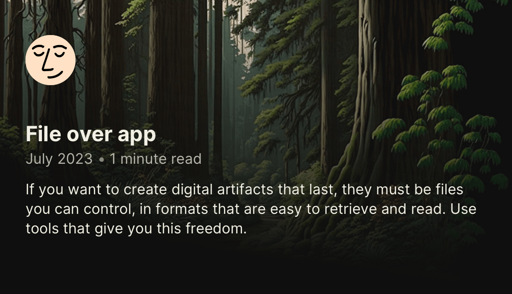I personally wouldn’t recommend obsidian (mentioned at the end of the article), but still, I think the article is worth reading.
It’s a good philosophy, to be sure. It doesn’t take many migrations to realize that keeping your files in open, easy to read formats is preferable.
I also use obsidian, but I do sometimes worry that the linking and metadata will be difficult to work with in the future when the software goes away. It’s all there in the files, but my vault is slowly linking together in interesting ways that rely on obsidian functionality.
I wonder this with obsidian also, it is one of the things that keeps me from diving in head first.
It seems a lot of its “powerful” functions are against it’s plain text advantage. However I don’t really see an easy way around it.
At least at the end of the day you or someone else could write a script to modify the plain text files for the next app.
It’s tricky for sure. The plain text is great, and all the functionality is built off of plain text (even the canvas!), but replicating the functionality isn’t trivial by any stretch of the imagination. Migration is easier because of the text files, but will it be as easy to see the links between notes? Or query all the notes I need more detail in? Or map it all out visually?
I think reimplementing the core obsidian functionality in a FOSS clone would be fun… except I already have a queue of projects and not a lot of time, so here I am complaining instead 🤷
Logseq is the obsidian foss clone , worth a try
Logseq is a great alternative. It’s very much not a clone, though. It has a different paradigm on how it views notes and the functionality isn’t exactly 1:1.
Well said. People all over the internet recommend Logseq as a FOSS Obsidian clone. It has a lot going for it, but the biggest thing stopping me from using Logseq is the forced bullet lists. Ugh




